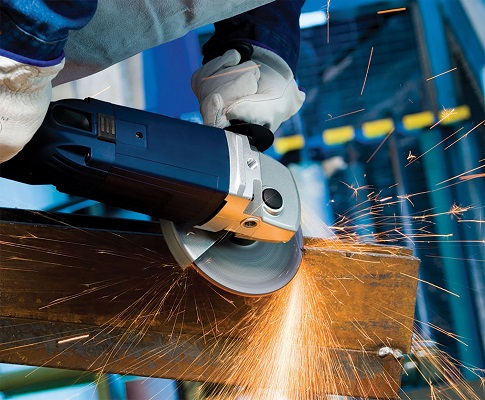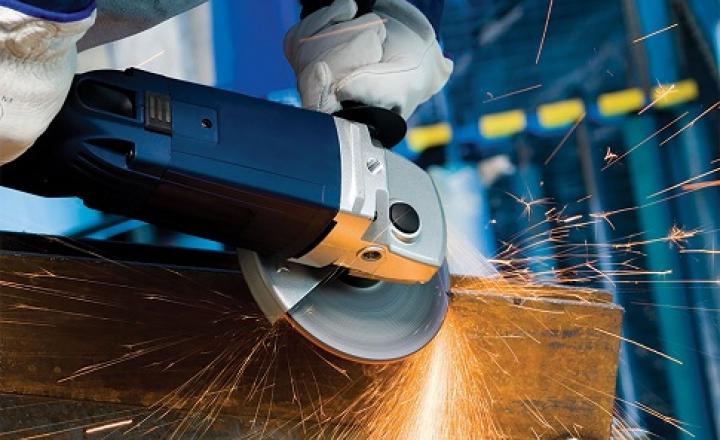Coated Vs. Bonded Abrasives: Comparing Grain Types
Abrasive grains are central to a wide range of precision and industrial finishing applications, but they are not a one-size-fits-all solution. They can be sub-divided by material type, grain size, application, and more. However, the two most common platforms for abrasive applications are coated and bonded abrasives. In this article, we will compare these two applications for abrasive grains in more depth.
Grains for Coated Abrasives
Coated abrasives are grains applied over a surface, commonly in the form of belts, sheets, discs, and rolls where the grain is attached via a binder to the backing, then another layer of binder additionally supports the grains. Sandpaper is perhaps the most common type of coated abrasive. Widely used substrates are paper, cloth, vulcanized fiber, and plastic films which are available in grit sizes ranging from very coarse (~24 mesh ) to ultrafine (micron sizes). The international standard for coated abrasives is ISO 6344.
Coated abrasives can utilize abrasive grains with high-performance properties and excellent uniformity. Ceramic grains are also self-sharpening to prolong life and can be used on materials that are difficult to grind or finish.

Saint-Gobain Abrasive Materials' Cerpass DGE® family of products are seeded gel abrasive grains that offer unique, highest-available sharpness and microstructure. These attributes result in an aggressive cutting and long-lasting ceramic grain well-suited for precision and vitrified bond systems, heavy-duty coated abrasive grain utilization, and low-pressure, tough-to-grind applications like fine finishing.
Bonded Abrasives
Bonded abrasives are abrasives in which the grains are bonded together to create a solid form which often takes the shape of a wheel. Bonded abrasives use a binding agent or resin in order to reinforce the grinding surface while cutting. The performance of an abrasive is determined by the type of grain, spacing, and bond material.
Bonded abrasives can be utilized for many different grinding applications, such as cut-off wheels, snagging wheels, mounted wheels, segments, plugs, and cones, and have a wide range of applications, with different bonding agents offering different functions.
Bonding abrasives are frequently used in heavy industry. This is because applications in which the removal of heavy stock removal on stainless and high alloy steels benefit from the addition of their aggressive cutting action, which can be greatly enhanced via the utilization of alumina-zirconia abrasive grain.
Bonded abrasives are also used in track grinding as rail surfacing greatly benefits from the rapid cutting action which enables a faster return to operation. Additionally, they can be used in foundry applications as their durability is able to withstand the severe environment of metal foundries.
MA88® monocrystalline alumina is an electro-fused abrasive created by fusing high purity alumina with special alloys. Each particle is a crystal which results in sharper, stronger edges that lead to enhanced bonding and sharper cutting action when molded into a bonded abrasive.
Key Differences
The key difference between bonded and coated abrasives is the technique employed to join the material to the product. Coated abrasives adhere a layer of abrasive material to the outside surface of the product whereas bonded abrasives are formed by the fusion of abrasive grains and the binder itself.
Examples of coated abrasives are discs, sheets, rolls, and belts while bonded abrasives comprise grinding wheels, polishing wheels, diamond wheels, cones, and segments.
Grains for Bonded Abrasives from Saint-Gobain
Saint-Gobain provides premium grains for bonded abrasives, offering groundbreaking cutting abilities which support increased efficiency and lower force development for a variety of industrial applications.
Bonded abrasives can be used in a number of markets such as aerospace, commercial construction, security, life sciences, and transportation.
High-performance bonded abrasive grains should be able to microfracture so fresh cutting edges are continuously renewed, meaning they become extremely versatile and productivity is enhanced. Grains for bonded abrasives from Saint-Gobain feature these capabilities which enables the grinding wheels to increase material removal rates and extend wheel life without the surface finish being sacrificed.
Grains for bonded abrasives from Saint-Gobain are hard, extremely tough and are much more long-lasting than standard abrasives in addition to cutting faster. If you would like to find out more, contact us today.
